1. evolution of cooperation
1.1. preceding life itself
1.1.1. molecules have to 'collaborate', precursor to cooperation
1.1.1.1. symbiogenesis
1.1.1.2. biologist Lynn Margulis emphasizes cooperation in evolution rather than competition
1.2. little kids tend to work together while chimps don't
1.3. group selection
1.3.1. intra-group cooperation makes the group stronger competitor
1.3.2. genes of altruistic individuals may not spread, but they enhance the group, and the group genes can spread more efficiently
1.3.2.1. in kinship genes spread also if one individual sacrifices herself for two siblings or eight cousins
1.4. reciprocity
1.4.1. direct reciprocity
1.4.1.1. you do me a favor, I do you a favor
1.4.2. indirect reciprocity (Nowak)
1.4.2.1. one does something for someone else and enhances her reputation in the group
1.4.3. network reciprocity
1.5. cultural evolution, social grooming (Robin Dunbar)
1.5.1. how many individuals can you groom and remember
1.5.1.1. humans can gossip
1.5.1.1.1. who is trustworthy
1.5.1.1.2. Dunbar's number
1.5.1.2. language and cooperation
1.5.1.3. mirror neurons
1.5.1.4. radical environmental changes
1.5.1.5. learning capacities
1.5.1.5.1. don't have to wait for genes to spread around
1.5.1.5.2. cooking meat
1.5.1.5.3. channeling of tribal instincts through symbol systems
1.5.1.5.4. innate sociality
2. Social Dilemmas
2.1. chicken game
2.1.1. will both drivers crash on collision course?
2.2. deadlock
2.2.1. non-cooperation always wins
2.3. assurance game
2.3.1. catching a hare or going for a stag hunt together?
2.4. mythic narratives
2.4.1. prisoner's dilemma
2.4.1.1. mistrust prevents mutual benefit
2.4.1.1.1. (too?) much focus on this one in popular discourse
2.4.2. tragedy of the commons
2.4.2.1. individual rationality leads to irrational outcomes
2.4.3. fear of free riders
2.4.3.1. underprovisioning
2.5. strategies
2.5.1. tit for tat
2.5.2. don't be envious
2.5.3. frequent and durable interactions
2.5.4. improve recognition
2.5.5. be generous
2.5.6. be provocable
2.5.7. don't be too clever
3. collective action
3.1. institutions for collective actions, building on social capital
3.1.1. networks
3.1.1.1. social metadata
3.1.1.1.1. identity
3.1.1.1.2. reputation
3.1.1.2. smart mobs
3.1.1.3. digital public
3.1.2. the commons
3.1.2.1. common pool resources
3.1.2.1.1. design principles
3.1.2.1.2. polycentric approach
4. our use of metaphors, images, stories
4.1. Darwin
4.1.1. Neo-Darwinism
4.1.1.1. Herbert Spencer
4.1.1.1.1. "survival of the fittest"
4.1.1.2. competition, war, struggle
4.1.2. cooperation
4.1.2.1. Kropotkin
4.1.2.1.1. mutual aid
4.1.2.2. Adam Smith
4.1.2.2.1. necessity of regulating markets
4.2. political leaders as (not so good) story-tellers
4.2.1. #occupy
4.2.2. Mao
4.2.3. Obama
4.2.4. Laurence Lessig
4.2.4.1. Republic Lost
4.3. differences between cultures
4.3.1. societies where individual comes first
4.3.1.1. define 'societies'
4.3.1.1.1. avoid generalizations
4.3.1.1.2. various narratives can coexist
4.3.1.1.3. societies change
4.3.2. societies where group interest is most important
4.3.2.1. differences in dealing with defectors
4.3.2.2. pre-emptive strikes by defectors
4.3.2.3. dealing with those who do not punish defectors
4.3.3. religion as a tool to enhance cooperation
4.3.3.1. Darwin's cathedral
4.4. our image of nature
4.4.1. shifting frontiers between culture and nature
4.4.1.1. 1491 and the native americans
4.4.1.2. corn, dogs creation by cross-breeding
4.4.1.3. cooking food
4.4.1.4. genetic engineering
4.4.1.4.1. synthetic organisms
4.5. our image of technology
4.5.1. greater, global, massively interconnecting system vibrating around us (Kevin Kelly)
4.5.2. how it evolves (Brian Arthur)
4.5.3. how it makes us unhappy (Spencer Wells)
4.5.3.1. also look at cyberpunk
4.5.3.1.1. neal stephenson
4.5.3.1.2. william gibson
4.5.3.1.3. bruce sterling
5. technologies of cooperation
5.1. internet protocols
5.2. open source
5.2.1. reframing corporate paradigms
5.3. peer production, unix
5.3.1. apache
5.3.1.1. distributed computation
5.4. semi-permeable private-public boundaries
5.5. lowering barriers to cooperation
5.5.1. smart mobs
5.5.1.1. using sms, mobile
5.5.1.1.1. political revolutions
5.5.1.1.2. flash mobs
5.5.1.1.3. alternative currencies
5.5.1.1.4. alternative news
5.5.1.1.5. twestivals
5.5.1.2. others tools
5.5.1.2.1. mechanical turk
5.5.1.3. power law of participation
5.5.1.3.1. meritocracy
5.5.1.3.2. are power laws natural? ethical?
5.5.1.4. reaction by state, intelligence
5.5.2. bad mobs
5.5.2.1. can use the same tools
5.5.2.2. empowerment of the evil individual, group
5.5.2.3. reaction by states, intelligence
5.5.3. competition between state and mobs, leading to less empowerment? big brother?
5.5.3.1. is the declaration of the independence of cyberspace good or bad?
5.6. alphabet
5.6.1. printing press
5.6.1.1. l'encyclopédie
5.6.1.1.1. revolutions
5.6.1.1.2. wikipedia
5.6.1.2. mass dissemination of information
5.6.1.2.1. memes spreading like... genes?
5.6.1.2.2. polycentricities of governance
6. cooperation in biology
6.1. Lynn Margulis
6.1.1. consciousness
6.1.1.1. microorganisms, bacteria
6.1.1.1.1. orient themselves
6.1.1.1.2. work together
6.1.2. symbiosys
6.1.2.1. natural selection
6.1.2.1.1. increasingly complex levels of individuality
6.1.2.2. cooperation
6.1.2.2.1. long lasting intimacy of strangers
6.2. Stigmergy
6.2.1. complex, seemingly intelligent structures
6.2.1.1. efficient collaboration between very simple agents
6.2.1.2. no need for planning, control, direct communication
6.2.1.3. e.g. ants, hives
6.2.1.3.1. they use metadata (chemicals)
6.2.1.4. traces left in the environment lead to next actions, leading to intelligent outcomes
6.2.2. applications
6.2.2.1. the internet
6.2.2.1.1. wikis
6.2.2.1.2. html as metadata
6.3. rhizobia
6.3.1. cooperative relation between legumes and certain bacteria
6.3.1.1. mutualism
6.3.1.1.1. tit for tat for plants (sanctions against cheats)
6.3.2. rhizome in the work of deleuze, guattari
6.3.2.1. multiple, non-hierarchical entry and exit points in data representation and interpretation
6.3.2.2. planar and trans-species connections
6.3.2.3. vertical and linear connections
